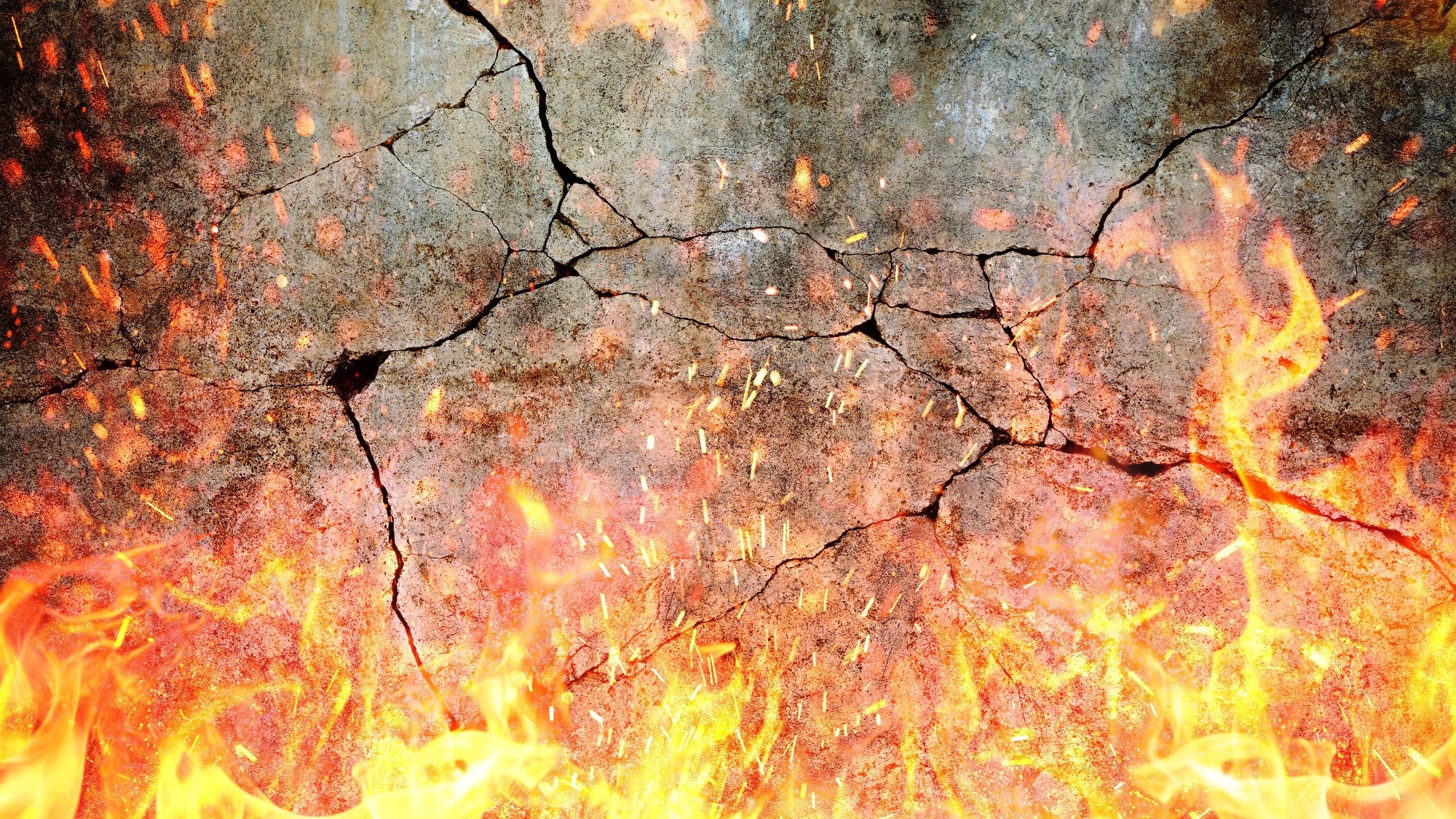Researchers have developed and validated a heat transfer model that accurately predicts the survival of encapsulated bacteria in self-healing concrete exposed to high temperatures during fires.
 Study: Validated thermal model for bacterial survival in fire-resistant self-healing concrete. Image Credit: Alones/Shutterstock.com
Study: Validated thermal model for bacterial survival in fire-resistant self-healing concrete. Image Credit: Alones/Shutterstock.com
Published in Scientific Reports, the study introduces a predictive framework that incorporates thermal properties of multi-layer encapsulation, radial heat diffusion, and bacterial inactivation thresholds. The model’s predictions were verified using experimental data across fire-relevant temperatures ranging from 200 to 800 °C.
Background
Microbial self-healing concrete offers a sustainable way to extend the service life of infrastructure by using bacteria to seal cracks through calcium carbonate precipitation. This is typically achieved by embedding bacteria and a nutrient source - such as calcium lactate - into the concrete matrix, enabling autonomous repair when cracks form.
However, for real-world applications, these materials must perform reliably under extreme conditions, including high-temperature fire events. Fires can severely damage concrete and its internal structure, making bacterial survival - and thus self-healing - difficult. This remains one of the key challenges to implementing bacteria-based self-healing systems in practice.
While prior studies have assessed the viability of bacterial spores after thermal exposure, most lack a predictive model that can estimate survival based on heat exposure parameters. This study addresses that need by presenting a validated, transient heat transfer model that links fire exposure time, material properties, and encapsulation design with bacterial survival outcomes.
Methods
The research team developed a computational model to simulate heat transfer through encapsulated bacteria in concrete exposed to high temperatures. The goal was to determine how long the bacteria could survive before internal temperatures exceeded 70 °C - a critical threshold for viability.
To validate the model, the team used experimental data involving Bacillus subtilis spores encapsulated in carbon fiber shells, coated with cement paste, and embedded within concrete specimens. These samples were subjected to controlled furnace heating at four distinct temperatures - 200, 400, 600, and 800 °C - each for one hour, simulating various fire scenarios.
After heating, the samples cooled gradually in the furnace over a 24-hour period to minimize cracking. Mechanical testing and microbial viability assays followed, using the standard spread plate method to evaluate survival rates, thermal degradation, and any retained self-healing potential.
Results and Discussion
The model, which used a finite difference approach and integrated bacterial inactivation kinetics, showed strong agreement with experimental results. Predictions of bacterial survival aligned with observed compressive strength data and thermal imaging, especially in concrete core regions. Localized post-fire calcium carbonate formation further confirmed both the accuracy of the model and the potential for bacterial reactivation.
Notably, the use of carbon fiber as an encapsulation material significantly extended bacterial survival across all fire scenarios. The study reported survival durations of up to 19.5 hours at 200 °C and nearly 4 hours at 800 °C. This extended protection is attributed to carbon fiber’s excellent thermal stability. In contrast, gelatin-based encapsulations failed to protect bacterial spores beyond 200 °C, with negligible survival times.
Carbon fiber offered dual advantages: thermal insulation and structural reinforcement. Specimens using carbon fiber retained 40–45 % of their original strength at 600 °C, compared to less than 25% for gelatin-based ones. These specimens also demonstrated better microstructural integrity after thermal exposure, making them more viable for post-fire self-healing.
Meanwhile, gelatin-based encapsulations underperformed due to early decomposition, weak bonding, and void formation, all of which accelerated crack propagation and reduced bacterial viability.
The geometry of the encapsulation also played a significant role. Protective layers between 1.75 and 2.0 mm effectively slowed heat transfer, keeping internal temperatures below lethal levels for up to five hours at 600 °C. Thinner layers, by contrast, allowed heat to penetrate rapidly, sharply cutting down survival time.
Conclusion
This study presents a validated model capable of predicting bacterial survival in fire-exposed self-healing concrete by integrating heat transfer simulations with experimental observations. It provides critical insights into the interplay between encapsulation design, thermal protection, and microbial viability - comparing two encapsulation methods: carbon fiber shells and gelatin capsules coated with cement paste.
However, the model’s current scope is limited to Bacillus subtilis spores encapsulated in carbon fiber or gelatin, under ISO 834 fire curve conditions. Broader applicability to other microbial agents, encapsulation strategies, or fire scenarios remains a direction for future work.
Journal Reference
Vedrtnam, A., Kalauni, K. & Palou, M. T. (2025). Validated thermal model for bacterial survival in fire-resistant self-healing concrete. Scientific Reports, 15(1). DOI: 10.1038/s41598-025-13562-7. https://www.nature.com/articles/s41598-025-13562-7.
Disclaimer: The views expressed here are those of the author expressed in their private capacity and do not necessarily represent the views of AZoM.com Limited T/A AZoNetwork the owner and operator of this website. This disclaimer forms part of the Terms and conditions of use of this website.